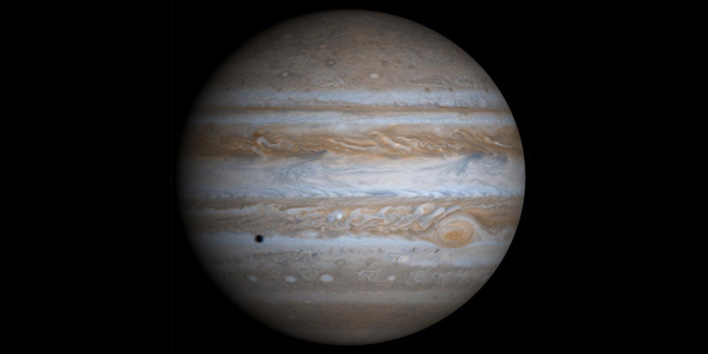How Jupiter's Red Spot Stays Great
木星大红斑的“长寿”之谜
A three-dimensional analysis offers an explanation for how Jupiter's Great Red Spot hasn't petered out.
一个强大的3D模型,破解了木星大红斑经年“不死”的神秘谜团。
撰文/播音 凯伦•霍普金(Karen Hopkin)
翻译 李轩
校对 尹秋媛
Jupiter’s Great Red Spot. It’s one of the most familiar sites in our solar system. It’s also one of the most mysterious. Because, based on most calculations, this flashy display of swirling gases should be long gone. Now, scientists think they know the secret to the storm’s endurance. Which they reveal at a meeting of the American Physical Society’s Division of Fluid Dynamics in Pittsburgh. [Pedram Hassanzadeh and Philip Marcus, On the Unexpected Longevity of the Great Red Spot, Oceanic Eddies, and other Baroclinic Vortices]
木星大红斑是我们再熟悉不过的太阳系奇观,但却一直没有卸下自己的神秘面纱。从大部分计算结果上来看,理论上,这团气体涡旋早就该消失了。如今,科学家认为他们找到了大红斑能够长久存在的原因,并在匹兹堡的美国物理学会流体动力学分会上探讨了这一问题。
The Great Red Spot is like a humongous hurricane. But one that’s raged for hundreds of years. Most models find that turbulence and heat loss should have bled away the spot’s energy. And a pair of nearby jet streams, which flow in opposite directions, should have slowed its spin. So how is it still there?
大红斑就像一个巨型飓风,只不过它已狂暴了数百年。大多数模型认为,紊流与热损失应该早已将大红斑平息。并且,大红斑附近一对方向相反的喷流(jet stream),应该也会减慢它的转速。但是,它为什么依然存在呢?
In the latest analysis, researchers built a 3D model of the Great Red Spot and really gave all three dimensions their due. They discovered that as the spot’s horizontal winds are depleted, a vertical flow of gas from above and below keeps feeding it energy. And a circular flow sucks energy from those jet streams and diverts it into the storm. All of which keeps the red spot great, by Jove.
在最新的分析中,研究人员为大红斑建立了一个包含其全部三维特征的3D模型。他们发现,当大红斑的水平风削弱,上方和下方的垂直气流会持续为其注入新的能量,循环气流也会从那些喷流中吸取能量,并转移到风暴中。正是这些因素,维持了木星大红斑的长时间存在。
(题图来源:NASA)


 京公网安备11010502039775号
京公网安备11010502039775号